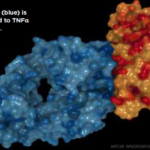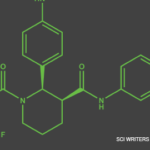(Reuters Health)—In the rush to approve new medicines, the U.S. Food and Drug Administration often requires drug companies to study possible side effects and alternative doses for medicines once they hit the broader market.
A September 20 online analysis in the New England Journal of Medicine concludes that, in many cases, that’s not being done.
Dr. Steven Woloshin of the Dartmouth Institute for Health Policy and Clinical Practice in Lebanon, New Hampshire, and colleagues looked at federal records and found that among the 614 studies mandated in 2009 and 2010, 20% were never started and 9 percent have been delayed.
“When drugs are approved, the trials are usually small and short-term, and some side effects may not emerge until the post-marketing phase,” Woloshin told Reuters Health in a telephone interview. “The problem is, the faster you get them on the market, the more open questions there are” about their safety or the best dose.
In a response published in the Journal, the FDA said that by its tally, 88% of all postmarketing requirements – not just those mandated in 2009 and 2010 – “were progressing according to their original schedules” as of the 2015 fiscal year.
One of four drug companies contacted by Reuters Health provided evidence that the information about its post-approval registry reported by the Woloshin team is inaccurate.
With President Donald Trump vowing to further speed the FDA approval process, “Drug approval is likely to become increasingly rapid and rely on looser evidence standards,” the Woloshin team writes in its report. “It will be crucial to ensure that the important questions that are unanswered at the time of approval are resolved as quickly as possible, too.”
One example of missed deadlines is Indivior’s Suboxone, a combination of buprenorphine and naloxone used to treat opioid dependence. The FDA wanted to know if it caused a specific problem with the heart.
“The sponsor was given more than 1 year to submit the trial protocol and 5 years to complete the trial,” the study authors write. “Nevertheless, as of July 2017, the final protocol had apparently not been submitted.”
And when Novartis’ $72,000-a-year multiple sclerosis treatment Gilenya (fingolimod) was approved, the FDA told the company to test a lower daily dose.
“Sometimes a lower dose may be as effective but have fewer side effects,” Woloshin explained.
Yet “more than 6 years after approval, the trial had not been completed because of recruitment difficulties despite the manufacturer reporting $2.8 billion in sales,” the researchers write.
The company released a statement to Reuters Health saying recruitment was slow because multiple sclerosis therapy has evolved. Results of the study are expected in the second half of next year.
One example cited by the researchers is being challenged. The case involves Victoza, Novo Nordisk’s widely prescribed drug for type 2 diabetes. Animal tests showed it might cause thyroid cancer. The FDA ordered the company to create a 15-year registry to record cases of thyroid cancer among users. The deadline for submitting rules for running the registry was July 2010.
The Woloshin team contends that no protocol for the registry has been submitted and cites an FDA website showing the registry as “Delayed.”
But company spokesman Ken Inchausti supplied a link to the trial on the website clinicaltrials.gov showing that enrollment began in January 2012. He told Reuters Health in an email that 996 patients have been interviewed to date.
Woloshin and colleagues write that their data show 16% of the ongoing studies are on schedule.
“Although being on schedule is reassuring, we would argue that some FDA-specified schedules are too long,” they write. The team believes the FDA should set shorter deadlines and impose penalties when companies miss these deadlines.
“For example,” they write, “the schedule for a 1-year pediatric safety and efficacy study for Welchol (colesevelam), used to assess treatment effects on type 2 diabetes in children . . . allowed 6 years for completion; an additional 4-year extension was also granted.”
The drug is marketed in the U.S. by Daiichi Sankyo, Japan’s second largest pharmaceutical company.
In some cases, the FDA has simply dropped a requirement for a postapproval study without giving a reason. “Adding this information to its public postapproval database would increase transparency,” Woloshin’s team writes.
The FDA statement does not directly respond to the suggestions. “Over time, advances in science, changes in standards of care, and new clinical information can affect study feasibility, design requirements, and even the need for or the appropriateness of a study,” the agency said.
“The FDA tracks these circumstances carefully and works with manufacturers to ensure that the postmarketing requirement or commitment study provides the information needed for public health,” it added.
Reference
- Woloshin S, Schwartz LM, White B, et al. The Fate of FDA Postapproval Studies. New England Journal of Medicine. 2017 Sep 21;377(12):1114-1117.


